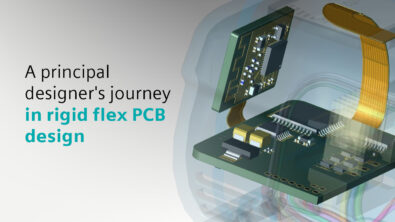When to Flex?
 Flex and rigid-flex PCB design is becoming increasingly popular as consumers (and many other markets) choose thinner, lighter, and more compact products and systems. But is flex right for your design?
Flex and rigid-flex PCB design is becoming increasingly popular as consumers (and many other markets) choose thinner, lighter, and more compact products and systems. But is flex right for your design?
Interestingly, the end system does not need to be dynamically flexible in order for flex designs to be considered. The concepts of flex-to-fit or flex-to-assemble, in which the PCB system is folded only during manufacturing to fit in the assembly, are growing, thus opening the design space for thinner, more compact systems that are faster to build.
With flexible PCBs, products can interact dynamically with their end users, folding and bending to meet a variety of new market niches. A wide array of new materials supports these new uses making flexible circuits more suitable in end products than ever before. I talk about this in my latest webinar, Why you should consider rigid-flex in your next PCB design.
You need a holistic view of design optimization to ensure rigid-flex design success. Look at the PCB orientation, component placement, thermal requirements, and how the system is assembled and tested. The flex PCB is the central component in this holistic design process.
New for 2018
Beginning with the VX.2.3 release, you can create rigid-flex designs with PADS Professional! Learn more in my new webinar. A datasheet is also available.



Has anyone done a simple rigid flex with PADS standard?
Only PADS Professional and Xpedition support multiple stackups through true support of multiple board outlines, advanced DRC checks, and 3D visualization. Flex boards have been built without the flex option in the past, its just a matter of making sure your manufacture understands your intent with the EDA data, which is easier to build in and verify with the flex option.